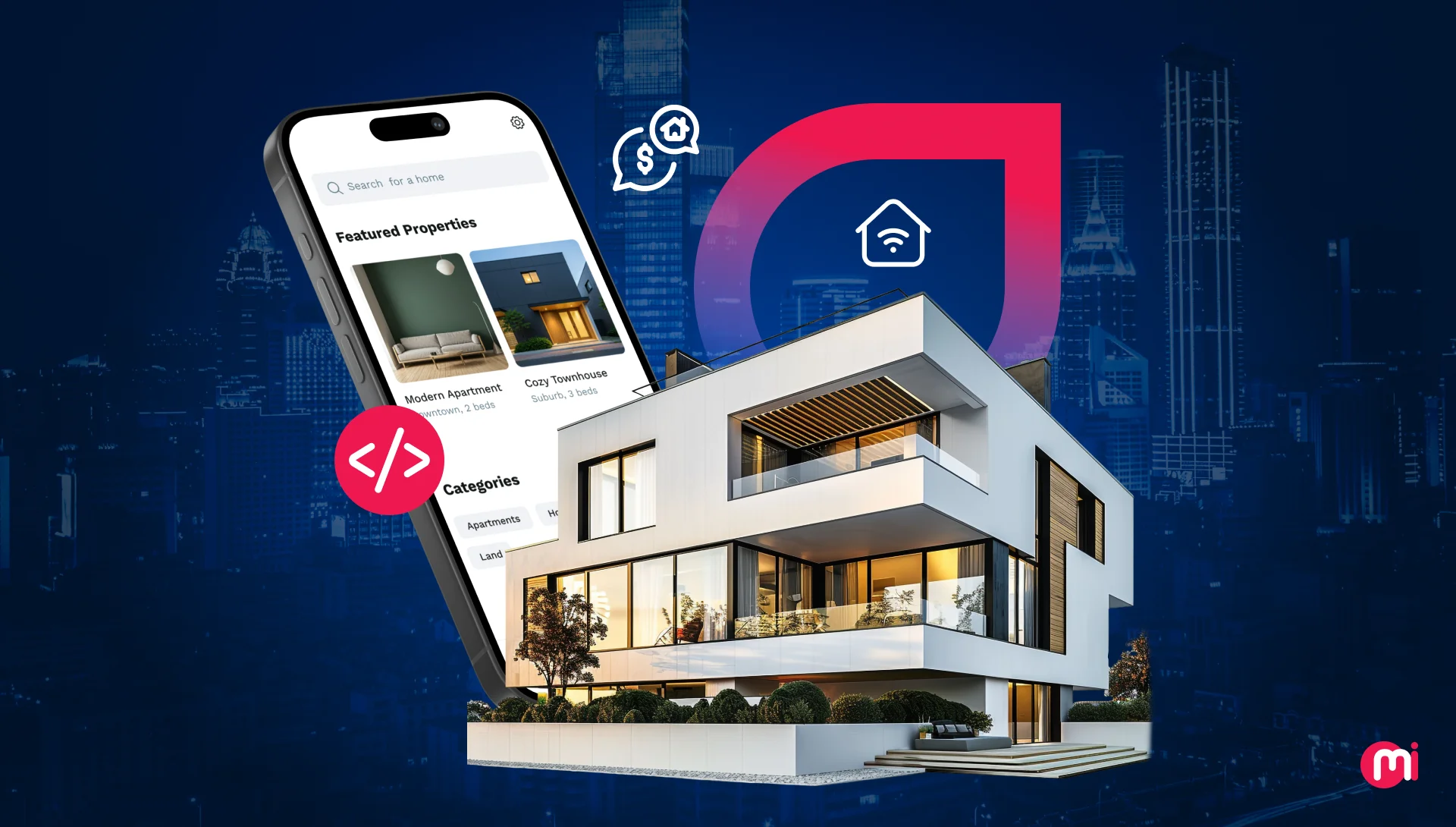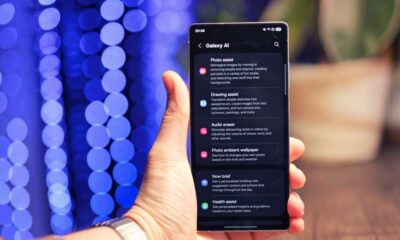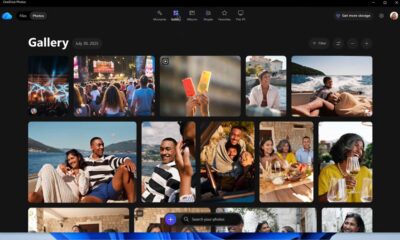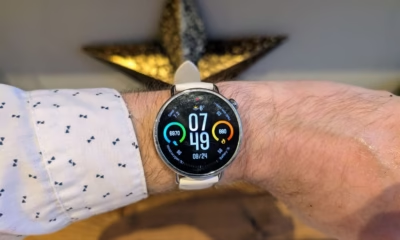Tech News
Mastering Real Estate App Development: A Comprehensive Guide

Real estate app development is a crucial aspect that requires careful planning, the right platforms, and a good understanding of feature integration. This article aims to explore the intricacies of developing real estate apps, focusing on key steps, significance, cost estimation, and monetization strategies. It also highlights must-have features like AI-powered tools, secure payments, and property listings to help organizations deliver user-friendly apps that drive growth in the digital real estate market.
The landscape of buying, selling, and renting properties has been revolutionized by advanced technologies. In today’s digital-first world, real estate app development has become essential, with 100% of buyers using digital platforms at some point in their home search. Advanced real estate apps play a vital role in the modern property marketplace, enabling tasks such as securing mortgages, browsing listings, taking 3D virtual tours, and signing contracts digitally.
For PropTech startups, real estate organizations, and agents, investing in custom real estate app development is no longer optional – it is a significant growth driver. Whether operating in the Asia-Pacific housing ecosystem, the European PropTech sector, or the US real estate market, a well-designed and developed app ensures a competitive edge, unlocks new revenue opportunities, and enhances customer experiences.
This comprehensive guide delves into the fundamentals of real estate app development, covering key types, must-have features, cost breakdowns, and market trends.
The Significance of Mobile Apps for Real Estate Businesses
Real estate apps go beyond virtual tours and digital property listings. These dynamic platforms streamline processes for investors, agents, sellers, and buyers. Some significant benefits of real estate apps include:
– Smarter Search: Intelligent search features and filters help users find homes that meet their requirements.
– Easy Accessibility: Clients can search for properties from anywhere, at any time, with a tap on their mobile devices.
– Immersive Experiences: AR/VR features facilitate virtual property tours, replacing the need for physical visits.
– Data-Driven Insights: Data analytics help realtors understand client preferences and market trends.
– Transparency and Trust: Real estate app development enables real-time collaboration, digital contracts, and secure payments.
– Better Revenue Potential: Advanced features support monetization through commission-based models, ads, or premium listings.
Different Types of Real Estate App Development
The real estate industry offers various digital solutions tailored to different target audiences, whether investors, agents, buyers, or renters. The types of real estate apps to consider include:
1. Property Listing Apps: Online platforms for searching, filtering, and comparing properties, including mortgage calculators and virtual tours.
Top Examples: Trulia, Realtor.com, Zillow
2. Rental Marketplace Apps: Connect tenants directly with landlords for temporary or permanent rentals, featuring payment gateways and in-app messaging.
Top Examples: Snug, Vrbo, Zumper, Airbnb
3. Real Estate Aggregator Apps: Curate listings from different sources for seamless comparisons, relying on APIs, data accuracy, and a robust backend.
Top Examples: Nestoria (UK), MagicBricks (India), 99acres (India)
4. Real Estate Investment Apps: Designed for investors to predict trends, ROI, and ownership potential, with analytics dashboards and crowdfunding features.
Top Examples: CrowdStreet, RealtyMogul, Fundrise
5. Smart Home Integration Apps: Merge property listings with IoT features like thermostats, smart locks, or lighting, catering to modern buyers.
Top Examples: SmartHome, SmartRent, Vivint Smart Home, Z-Wave
6. Commercial Real Estate Apps: Focus on properties like warehouses, retail outlets, and office spaces, featuring business tenant management and lease tracking.
Top Examples: Crexi, CoStar, LoopNet
7. Broker/Agent Management Apps: Assist brokers and agents in managing property leads, client interactions, and portfolios, acting as CRM platforms with task automation.
Top Examples: Zoho CRM, Keller Williams Command, Compass
8. Auction and Bidding Apps: Enable users to make bids and participate in live property auctions, offering real-time notifications and robust security.
Top Examples: Xome, Hubzu, Auction.com
9. Neighborhood and Lifestyle Apps: Help buyers explore the property’s surroundings, including neighborhood amenities, culture, security ratings, hospitals, and schools.
Top Examples: Walk Score, AroundMe, Niche (for neighborhoods)
Must-Have Features of a Successful Real Estate App
Successful real estate apps prioritize trust, speed, and simplicity to meet user expectations. Key features that contribute to the app’s success include:
– Secure Payments: Blockchain-powered transactions and digital contracts.
– User Authentication: Multi-factor authentication and social login.
– Admin Dashboard: Analytics, reporting, and agent management.
– High-quality Media: 3D/VR tours, videos, and HD photos.
– Mortgage and EMI Calculator: Financial clarity for renters and buyers.
– Map Integration: Street View, Google Maps, and nearby facilities.
– Property Listings with Filters: Amenities, size, price range, and location.
– Push Notifications: Real-time alerts for new listings, shortlisted searches, and price drops.
– Favorites and Shortlisting: Save and compare different properties.
– In-app Chat and Call: Directly connect with agents or realtors.
– Advanced Search: AI-powered search for voice search and personalized recommendations.
How to Build a Real Estate App?
Building a successful real estate app goes beyond programming – it requires design thinking, strategic planning, selecting the right tech stack, continuous optimization, and leveraging expert mobile app development services. The step-by-step process to build a real estate app that meets user expectations and drives business growth includes:
Step 1: Market Research and Competitor Analysis
– Understand the target audience – realtors, investors, renters, or buyers.
– Analyze popular real estate apps to identify features and pain points.
– Gather information on essential features like virtual tours and search filters.
Step 2: Define Business Objectives and Monetization Models
– Define the app’s purpose – agent management, investments, rentals, or listings.
– Choose a revenue model – premium features, freemium, ads, commission, or subscription.
– Set KPIs for measuring app performance.
Step 3: Wireframing and UI/UX Design
– Design wireframes outlining the user flow from search to booking.
– Emphasize mobile-first design, minimal clicks, and intuitive navigation.
– Integrate interactive components like 3D views and map-based searches.
Step 4: Choose the Tech Stack
– Hire developers to select the ideal tech stack for scalability and performance:
– Frontend: Kotlin, Swift, Flutter, React Native
– Backend: Ruby on Rails, Django, Node.js
– Database: Firebase, MongoDB, PostgreSQL
– Cloud Services: Azure, Google Cloud, AWS
– Maps and Geolocation: Mapbox, Google Maps API
– Payments: Razorpay, PayPal, Stripe
– AR/VR: ARCore, ARKit, Unity
– AI and Chatbots: Dialogflow, TensorFlow
Step 5: Core Feature Integration
– Design and integrate essential features like push notifications, interactive maps, property search, in-app messaging, 3D tours, and secure payments.
Step 6: Advanced Feature Integration
– Integrate advanced features for a competitive edge:
– AR/VR for immersive tours
– AI-powered recommendations
– Chatbots for query resolution
– Web3 technology
– Blockchain for secure transactions
Step 7: QA Testing and Quality Assurance
– Perform performance, functional, and security testing.
– Test across devices for compatibility.
– Address issues and improve app speed before launch.
Step 8: Deployment and Launch
– Launch the app on platforms like Apple Store or Google Play Store.
– Optimize app store listings with SEO-friendly titles, descriptions, and screenshots.
– Use beta testing platforms like TestFlight and Userbrain for feedback.
Step 9: Post-Launch Support and Maintenance
– Offer integrations, loyalty rewards, and seasonal offers for user retention.
– Ensure data security, scalability, and server uptime.
– Continuously upgrade features based on user feedback.
Challenges in Real Estate App Development and Their Solutions
Real estate app development comes with challenges, from meeting user expectations to managing large amounts of data. Strategies to address key challenges include:
1. Managing Large Property Databases
– Use MLS APIs for real-time updates.
– Implement data caching for quick searches.
– Utilize cloud databases for scalability.
2. Building Precise Search and Filter Functions
– Deploy map-based search with geolocation.
– Include advanced filters for accuracy.
– Use AI search algorithms for customization.
3. Ensuring Secure Transactions
– Implement blockchain-powered smart contracts.
– Use secure payment gateways.
– Enable SSL encryption and 2FA.
4. Delivering a Seamless User Experience
– Test functionality with beta users.
– Optimize for iOS and Android devices.
– Follow UI/UX best practices for intuitive design.
Significant Monetization Models for Real Estate Apps
Monetizing real estate apps involves various models to generate revenue, including:
1. Subscription Plans
2. Featured Listings and Premium Ads
3. Commission-Based Model
4. Freemium Model
5. Lead Generation for Brokers and Agents
6. Affiliate Marketing and Third-Party Partnerships
7. White-Label Solutions
Real Estate App Development Cost Estimation
The cost of developing a real estate app varies based on factors like project complexity, features, platform, and development team location. Cost breakdowns include:
– Basic Real Estate App (MVP): $25,000 – $40,000
– Mid-Complex App: $40,000 – $80,000
– Advanced Real Estate App: $80,000 – $150,000+
Factors influencing development costs:
– App Complexity
– Platform Choice
– UI/UX Design
– Development Team Location
– Third-Party Integrations
Why Choose MindInventory for Next-Gen Real Estate App Development
MindInventory offers expertise in real estate app development, leveraging cutting-edge technologies like IoT, blockchain, AR/VR, and AI. With 15+ years of experience, MindInventory helps businesses design and deploy future-ready, intuitive, and resilient real estate apps tailored to global market demands. Services range from basic property listing apps to tech-oriented platforms with secure payments, smart contracts, and virtual tours.
FAQs on Real Estate App Development
– What are some top real estate app development trends?
– How much time does it take to build a real estate app?
– How do I ensure secure transactions?
– How do I engage with users after launching the app?
In conclusion, real estate app development is a multifaceted process that requires strategic planning, innovative features, and user-centric design. By understanding the key steps, challenges, and monetization models, businesses can create successful real estate apps that drive growth and enhance user experiences. Collaborating with experienced developers like MindInventory can ensure the development of cutting-edge apps that meet market demands and propel business success.

-

 Video Games2 days ago
Video Games2 days agoTekken 8: Rise of the Shadows
-

 Video Games1 day ago
Video Games1 day agoGoku Takes on the Dragon Ball FighterZ Arena
-

 Amazon2 days ago
Amazon2 days agoNeil Young Takes a Stand: Pulling Music from Amazon in Protest of Jeff Bezos’ Support for Trump
-

 Tech News2 days ago
Tech News2 days agoSamsung Galaxy UI 8: Embracing the Big Free AI Upgrade
-

 Security2 days ago
Security2 days agoCritical Vulnerability Exposed: Oracle EBS Targeted in Recent Cyber Attacks by Cl0p Hackers
-

 Apple2 days ago
Apple2 days agoExploring the Dystopian Realms of Pluribus: An Apple Original Series Trailer
-

 Microsoft2 days ago
Microsoft2 days agoEnhanced Copilot Features: Creating Office Documents and Gmail Integration
-

 AI1 day ago
AI1 day agoOracle’s Next-Gen Enterprise AI Services Powered by NVIDIA’s Cutting-Edge GPUs






























